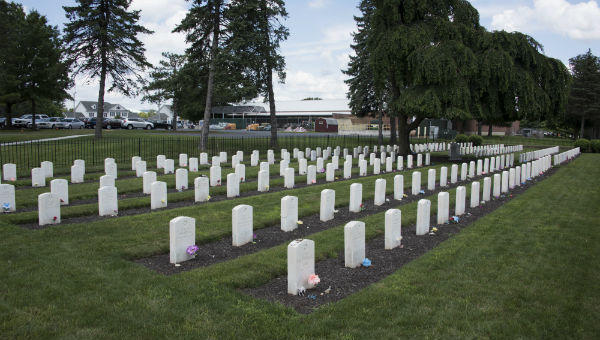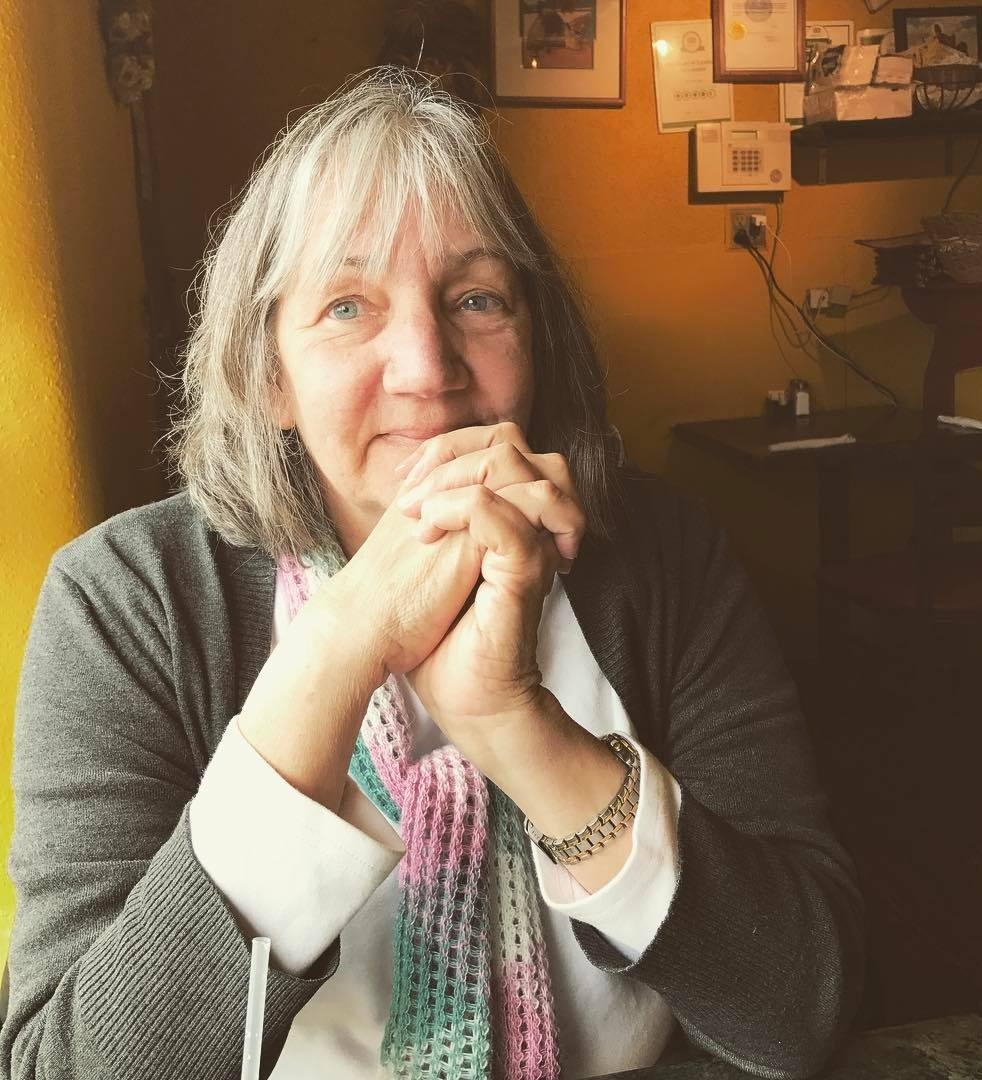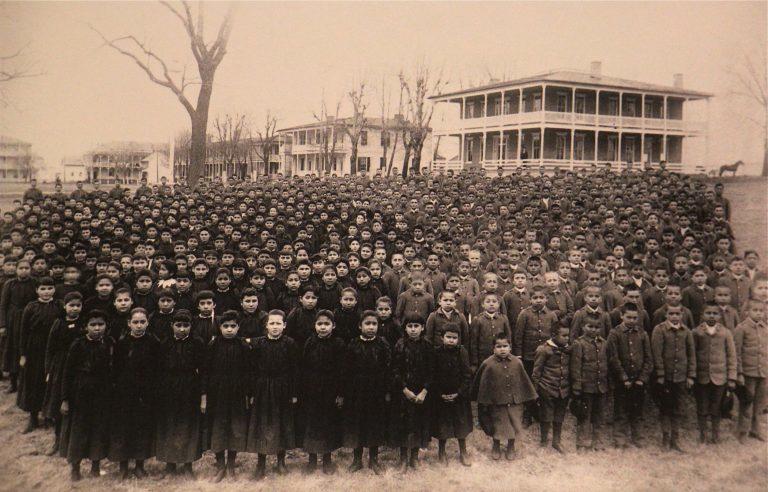Section Branding
Header Content
Indian Boarding Schools' Traumatic Legacy, And The Fight To Get Native Ancestors Back
Primary Content
After the remains of more than 1,300 First Nations students were discovered at the former sites of Canada's residential schools earlier this year, the U.S. is now facing its own moment of reckoning with its history of Native American boarding schools. In response to these findings, Secretary of the Interior Deb Haaland (a member of the Pueblo of Laguna) announced a Federal Indian Boarding School Initiative to review "the troubled legacy of federal boarding school policies."
In Carlisle, Pennsylvania, efforts have been underway since 2016 to return the remains of Native children to their proper resting places. Carlisle was home to the first off-reservation Indian boarding school in the U.S. — Carlisle Indian Industrial School. Today, it's an army barracks, home to the US Army War college for senior officers. But from 1879 to 1918, it housed Native students from tribes across America, with the express purpose of assimilating them into American culture.
Barbara Landis, a retired biographer and historian who has studied the school extensively, gives tours of the barracks on occasion. During a tour I attended earlier this month, she pointed out a row of white houses that surround a grassy commons.
"These three cottages you see down along the perimeter of the southern portion of the school grounds," Landis said, "were cottages that were built by Native American children as part of their industrial training." The Carlisle school had academic training for half the day and industrial training the other half - essentially cheap manual labor. Many of the buildings were constructed by students as part of this program, but they would also be sent out into the surrounding community to provide work for non-Native families. The boys were given construction and farm work, while the girls would serve in the home.
But upon entering the barracks, the first thing one will notice is the cemetery: rows of white headstones where students are buried. Over four decades, roughly 8,000 students attended the school, and nearly 200 were buried here. Now, the number of graves at Carlisle is incrementally dropping, since efforts began several years ago to return the remains of students to their tribes and families.
At times, parents of students at Carlisle would receive notice of their child's passing only after they had been buried. The cause was often attributed to disease, although abuse was often rampant at these schools. The entire system of Indian boarding schools has long been condemned by Native Americans as a form of cultural genocide.
The idea for the school, the first of its kind in America, began in 1879 with Richard Henry Pratt, a lieutenant colonel in the U.S. Army. "It was born out of his experience as the jailer of a group of Kiowa, Comanche, and Arapaho prisoners of war who were arrested by the United States and sentenced to a three-year imprisonment at Fort Marion, which is now the old Castillo de San Marcos Fort down in Saint Augustine, Florida," Landis said. "And while working with these prisoners, Pratt developed his philosophy in Indian education."
That philosophy is best summed up with a phrase he is often attributed to: "Kill the Indian, save the man."
Pratt was influenced by Puritan beliefs, and in the POW camp converted 12 prisoners to Christianity. He was able to get those 12 prisoners to help him recruit children for the Carlisle Indian School, which became the first class at Carlisle.
"Students, when they came into the school, their hair was cut," Landis said, "They were put in uniforms. They were organized into regiments and units and battalions. Pratt being a military man, he designed the program to be this very regimented structure."
Part of that regimented structure was a ranking system in which the more senior students would mete out punishment to their subordinates if they disobeyed orders.
"So, you can just imagine the psychological impact of that kind of a structure among Native American children and their peers. That was all part of the process of keeping discipline and keeping order at the school."
The government created these schools to assimilate American Indians into the dominant culture of the day - white American culture - says Matthew Sakiestewa Gilbert, professor and head of the Department of American Indian Studies at the University of Arizona, and an enrolled member of the Hopi tribe from Northeast Arizona. "The government had created these schools to teach Indian students, some as young as four or five years old, industrial trades so that they could be 'useful members of American society' and take that training back to back to their communities, or take that training into predominantly white communities that surrounded the Indian school."
Gilbert said he believes Haaland will be in a pivotal position to lead the effort to uncover potential gravesites in America's Indian boarding schools. Denise Lajimodiere, recently-retired associate professor of Educational Leadership at NDSU, and a founding member of the National Native American Boarding School Healing Coalition (NNABSHC), thinks so as well. She recalls hearing an interview with Deb Haaland on a podcast:
"One of the questions they asked her was, 'Do you think that we will find, in the United States, unmarked graves at boarding schools similar to what we found in Canada?' And she said, 'I don't know.' She said, 'I can't answer that.'"
"But I can answer that. Absolutely. A resounding yes, we will find unmarked graves at boarding schools."
One researcher, Preston McBride, believes the number of graves discovered could be as many as 40,000 here in the US. "That's a big number." says Gilbert. "That's more than I had ever thought. And so there's a story there, and I'm glad that with this revelation taking place in Canada, that it will shed more light."
In Carlisle, the process of repatriation is ongoing. In 2016, at the request of a member of the Northern Arapaho, the U.S. Army began collaborating with tribes to repatriate the remains of those buried at Carlisle. The process takes place once a year (with a pause in 2020 due to COVID). The most recent of these repatriations occurred back in July; the majority of those being returned belonged to the Rosebud Sioux Tribe in South Dakota, who held ceremonies in Carlisle and along the journey back to their reservation.
Rosebud Sioux President Rodney Bordeaux attended the final ceremony in South Dakota, where the remains were re-buried. He says the experience was humbling: "Being there, you're basically put back in time just imagining what they went through as young children."
I asked him what he hoped for from the investigation launched earlier this year by Secretary of the Interior Deb Haaland into Indian Boarding Schools, and he said he hopes it will bring about the true history of what happened to them.
"This history that happened to us, you know, there's been attempts over and over again to whitewash it, saying that it didn't happen. And it did happen. So it's best for America to learn what actually happened," he said. "And then they can understand our plight, our situation on reservations, but then also understand that... we want to be self-sufficient. We don't want to be dependent on our federal government. We want to move forward."
Copyright 2021 NPR. To see more, visit https://www.npr.org.



